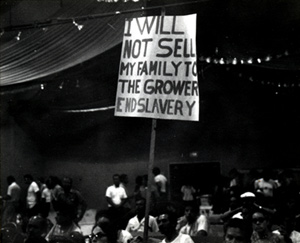
The contemporary connection I found from the years 1865 to 1914 had to do with the struggle for rights that African Americans faced and how that is very similar to the contemporary Chicano Movement of the 1950’s and 1960’s. Slaves that were previously denied any type of privileges and rights were suddenly given a voice by President Lincoln and other legislative amendments, now deeming them as a real part of American society. The same happened with the indigenous people of Mexico who had lived there all their life when suddenly, after the U. S. won parts of the Mexican territory (present day California ) from the Spanish-American War, they now found themselves in America. Literally overnight, they had become American citizens. Although these people were technically on American soil, they were no more American than the African slaves who had been captured and brought there centuries before. Like they newly emancipated African American slaves, the previously Mexican “Americans” in the US were thrust into the population, having to abide by the nations rules and regulations, but had no real representation or any way in which to participate in the government that was ruling over them. Both Mexican’s and freed blacks experienced the discrimination from white supremacist groups when they attempted to garner some support and privileges for their own rights. The KKK disenfranchised blacks when they tried to vote with literacy test and intimidation. At the same time, Mexicans were being exploited in the farm laborers market with unfair working conditions and very low wages. However, Mexicans continued to participate in the labor market because there was no other job opportunity for them. The same way blacks were discriminated by whites over the issue of race, Mexican Americans too faced scrutiny for their tanned complexion, being referred to as dirty and Chicano, which originally functioned as a derogatory term that was later used to unite the movement behind an individual identity. Participants of the Chicano Movement used tactics like protesting, marches, and large gatherings to persuade the government to take heed to the lack of Chicano representation and the inequality they faced. African Americans also made efforts at moving the government to include this extremely large former slave population in its ideas for the country. I am also sad to say that like the freed slaves efforts to be painted into the picture of an American, the Chicano Movement also faced much opposition and to some still remains to see its efforts come into fruition.
No comments:
Post a Comment